Ok, you’re probably saying “not another pesto recipe!” but trust me when I tell you that this is your go to recipe for pesto. Especially true if you’re growing your own basil!

First of all, let me clarify that this is not an authentic Genoese basil pesto recipe. The authentic basil pesto recipe from Genoa uses European pine nuts which are, in my opinion, difficult to find and quite expensive making them out of reach for many people.
Pine nuts available in most North American stores are from China and are generally safe to consume however they can potentially cause Pine Mouth for certain people. Pine Mouth, also known as Pine Nut Syndrome (PNS), is an uncommon condition that generally begins 1-2 days after consuming pine nuts. It is characterized by a bitter metallic taste and can last 2–4 weeks.
Since I have no interest in pine mouth, I tend to exclusively use walnuts in my pesto recipes instead. Why Walnuts? Because they are:
- Readily available
- Relatively cheap
- Add a wonderful texture to the finished pesto
My recipe also uses lemons. Traditionally, lemons are not used but I like the hit of acid that lemons give to the recipe and the anti-oxidation properties too. Lemon juice helps keep your pesto bright green and lively and slows down browning. Check out other delicious summer recipes.
To learn more about growing your own herbs and which ones to select, check out my top 8 herbs to grow yourself blog post.

Pound it or process it?
The traditional way of making pesto is using a mortar and pestle. After all Pesto means to pound or to crush. Although my recipe can certainly be made in a mortar and pestle, I find that a food processor makes quick work and creates an even consistency.
NOTE: I do not recommend you use a blender to make pesto. Blenders (especially high speed blenders like Vitamix and Blendec) don’t give you enough control over the consistency of your product and you may end up with a sauce that’s too homogenous. Pesto is meant to be a little rough around the edges and have some bite to it.
Equipment and Ingredients
For this recipe, you will need:
- A food processor
- A cheese grater (for example a box grater or a microplane)
The ingredients:
- Fresh basil (as fresh as you can get, preferably homegrown!)
- Walnuts (whole or crushed)
- Garlic cloves
- Parmigiano-Reggiano (you can use pecorino too should you wish)
- Extra Virgin Olive Oil (choose a good quality oil)
- Lemons
- Salt/Pepper

Procedure
I like to start by processing the walnuts with the grated cheese, garlic, lemon juice and olive oil. The reason why I don’t include the basil at first is because I don’t want to process the tender green leaves too much so I always start with the other ingredients first. This helps create a coarse wet mixture. If you prefer your walnuts to be more finely crushed, process further.

I then add the basil to the processor and pulse as needed. We all have different preferences when it comes to texture so feel free to process more/less depending on your taste. Make sure to try your pesto and adjust your seasonings accordingly.
Serving your garden pesto
No doubt, the best way to enjoy pesto is with your favorite pasta. However there are many ways you can use this sauce. Here are a few ideas:
- Enjoy it with freshly toasted bread
- Stir it into a soup
- Add it to mashed potatoes
- Use it to dress roasted potatoes and vegetables
- Savor it as a dip
Substitutions
Even though this recipe uses pantry and fridge staples, sometimes we’re out of a specific ingredient and going to the store is not an option. Here are some substitution ideas:
- No cheese? No problem. Veganize this recipe by using a vegan cheese or omit the cheese entirely and add some nutritional yeast instead
- Arugula growing wild in your garden? Use it! Arugula makes excellent pesto and adds a sharp peppery bite to your sauce
- Harvesting garlic scapes from your garden? Use those instead of garlic cloves. Or better yet, try our Garlic Scape Walnut Pesto recipe.
If you’re a gardener like me and have access to other greens like radish tops and carrot tops, why not use those in your pesto recipe too? I would suggest you still use some basil when making radish or carrot top pesto for that sweet herbaceous flavour. I do not have any recipes for these variations, but if you’re up for experimenting in your kitchen, why not give it a go? Let us know how it works out for you.
Storing your pesto
Store pesto in an airtight jar in the fridge for up to 3 days. Cover your pesto with a thin layer of oil to help prevent oxidation.

Alternatively you can freeze your pesto in deli containers or reusable glass containers. Use within 6 months for optimal freshness and taste. Do not defrost in the microwave, but rather allow your pesto to come to room temperature slowly on the counter or in the fridge.

Now onto the recipe!
The Best Garden Pesto Recipe Ever
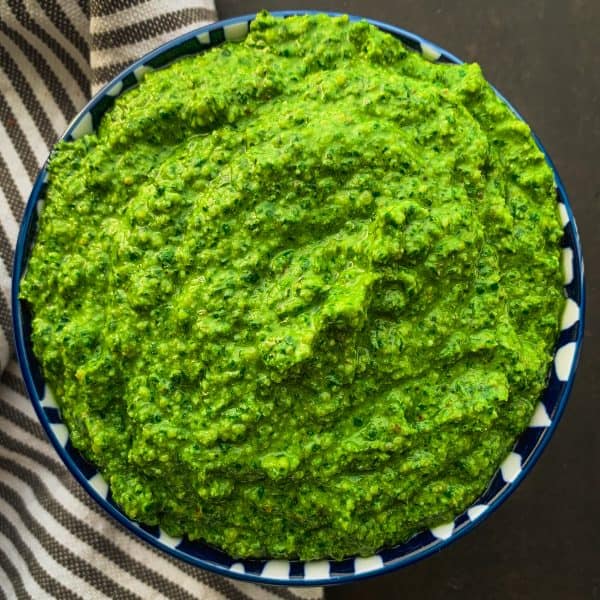
Equipment
- Food Processor
Ingredients
- 2 cups Basil leaves, Genovese or other Italian variety – Packed
- ½ cup Walnuts
- ½ cup Parmigiano-Reggiano, grated
- ¼ cup Extra Virgin Olive Oil – Use good quality oil
- ½ Lemon, juiced and zested – Use more or less depending on taste
- 2 Garlic cloves – Use more or less depending on taste
- Salt and Pepper to taste
Instructions
- In a food processor, add the walnuts, grated Parmigiano-Reggiano, Extra Virgin Olive Oil, lemon zest, lemon juice and garlic. Process until you have a coarse wet mixture.
- Add your basil to the food processor and continue to process. You may need to add your basil in batches depending on the size of your food processors. Process until you reach your desired consistency.
- Taste your pesto and adjust your seasonings. Parmigiano-Reggiano is salty, so you may not need to add much salt.
Notes
Nutrition
Nutrition information is automatically calculated, so should only be used as an approximation.
 Like this recipe? Rate & comment below!
Like this recipe? Rate & comment below!Did you try this recipe for basil pesto? Let us know what you think! Leave a comment below! And don’t forget to follow us on Facebook and Instagram!
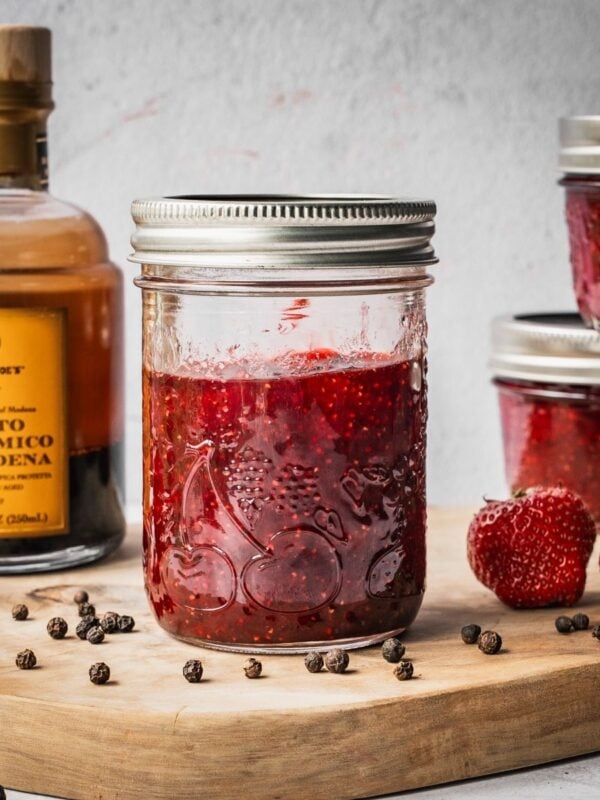
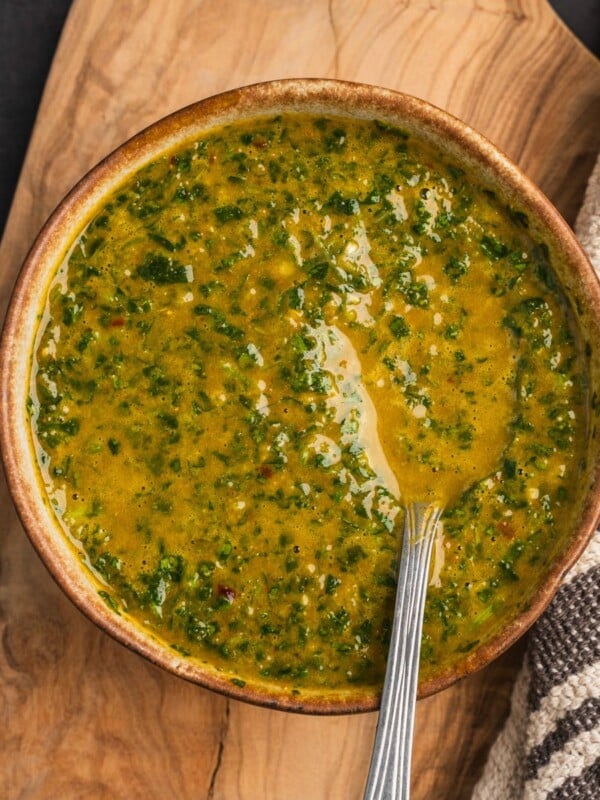
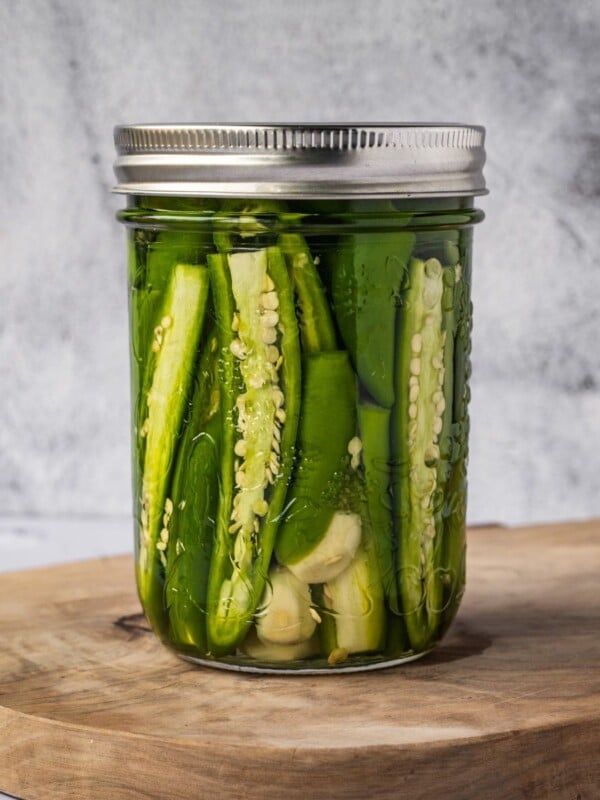
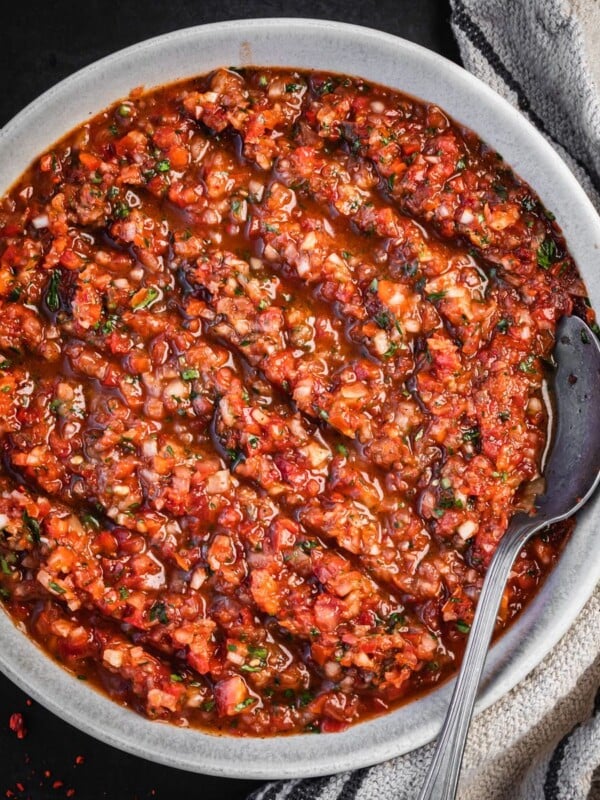








I use walnuts also, for a different reason: pine nuts contain some compound which gives me a migraine. I never knew there was a difference between pine nuts in our stores and European ones. I love the flavour walnuts impart. I have trouble getting the basil to the right size unless it’s dry and I process it first. How do you avoid tearing the basil when you add it later as per your recipe?
The basil is processed in the food processor so it will get torn up as it is processed. It is important for the fresh basil to be dry after washing so that it doesn’t add too much water to your pesto. I usually use a salad spinner to get it as dry as possible before adding it to the food processor.
I am wondering if I can water can this?
The recipe is not tested for canning. I recommend you freeze it instead. Thanks!